
The Plant Wall Group enjoying a night out at the ASPB meeting in Montreal. From Left: Matrika Bhattarai, Oyeyemi Ajayi, John Elmore, Yuan Zhang, Tasleem Javaid, Dasmeet Kaur, Ahmed Faik (with Star), and Allan Showalter.
Dr. Ahmed Faik and Dr. Allan Showalter with graduate students from the Plant Wall Research Group presented at the annual meeting of the American Society of Plant Biologists July 14-18 in Montreal, Canada.
Showalter is Professor and Chair of Environmental & Plant Biology at Ohio University. Faik is Associate Professor and Graduate Chair.
Graduate students Dasmeet Kaur, Oyeyemi Ajayi, and Yuan Zhang from the Showalter Lab and graduate students Matrika Bhattarai and Tasleem Javaid from the Faik lab, presented at the conference.
Showalter presented “Characterization of higher order hydroxyproline-O-galactosyltransferase mutants and glucuronosyltransferase mutants that function in arabinogalactan-protein glycosylation, growth, and development in Arabidopsis.”
Abstract: Arabinogalactan-proteins (AGPs) are cell wall glycoproteins found throughout the plant kingdom and are extensively post-translationally modified by conversion of proline to hydroxyproline (Hyp) and by addition of arabinogalactan polysaccharides (AGs) to Hyp residues. Here, we summarize our research progress on Hyp-O-galactosyltransferases (GALTs) responsible for initiation of AGP glycosylation and on glucuronosyltransferases (GLCATs), which add glucuronic acid (GlcA) to AGs. We have produced new, higher order mutants from the eight member GALT gene family contained within the GT31 family, which includes GALT2-6 and HPGT1-3. These new mutants include three triple mutants, two quadruple mutants, and one quintuple mutant. These mutants display considerably more abnormal phenotypes compared to the single galt and hpgt mutants and indicate gene redundancy. Abnormal phenotypes include lower germination rates, decreased plant height, smaller rosette leaves, delayed flowering, smaller siliques, decreased root length, and longer lateral roots under conditional salt stress. We are also examining three GLCATs within the GT14 family, namely GLCAT14A, GLCAT14B, and GLCAT14C, which are known to transfer GlcA to AGs. Previously, only the glcat14a mutant was phenotypically characterized. We have more completely characterized this glcat14a mutant and extend mutant characterization to glcat14b and glcat14c, as their mutants were not previously isolated. Additionally, we have produced two double mutants (glcat14aglcat14c and glcat14bglcat14c). These mutants showed significant reductions in the inner layer of seed mucilage, enhanced cell elongation in etiolated hypocotyls and roots, and root swelling in 4.5% sucrose. Finally, we are using CRISPR/Cas9 technology to expedite production of higher order mutants for both of these glycosyltransferase families. Progress using this approach will be discussed and compared to the more common T-DNA based/plant breeding approach which we have used. In conclusion, this work has begun to dissect the importance of specific glycosyltransferase genes to AGP functions and elucidated their redundant nature.
Kaur, a Ph.D. graduate student in Environmental & Plant Biology and the Molecular and Cellular Biology Program, presented “Generation and characterization of higher order knock-out mutants of Arabidopsis galactosyl-transferases to reveal functional roles of O-galactosylation of arabinogalactan-proteins.”
Abstract: Arabinogalactan-proteins (AGPs) are abundant extracellular glycoproteins implicated in a variety of growth and development processes in plants. AGP biosynthesis involves a series of post-translational modifications resulting in the addition of complex sugar chains to AGP core proteins. Eight galactosyltransferases (GALTs) namely, GALT2, GALT3, GALT4, GALT5, GALT6, HPGT1, HPGT2 and HPGT3, have been characterized to date for O-galactosylation of hydroxyproline (Hyp) residues in Arabidopsis AGPs, but it is unclear whether they exhibit genetically distinct or redundant roles. A reverse genetic approach is proposed to assess the functional roles of the GALT2-6 subfamily, the HPGT1-3 subfamily, and the combined GALT2-6 and HPGT1-3 subfamilies. Two current hypotheses include: 1. The eight GALTs glycosylate all co-expressed AGPs, but their levels of activity and sites of activity vary. 2. Multiple higher order genetic mutants for these GALTs, which are partially redundant or non-redundant, demonstrate more severe physiological phenotypes. Higher-order knock-out mutants were produced by crossing T-DNA insertional mutants, and the subsequent off-spring were genotypically screened using PCR analysis. To date, we have identified homozygous triple mutants (galt5hpgt2hpgt3, galt2galt5hpgt2, and galt5hpgt1hpgt2), a quadruple mutant (galt2galt5hpgt1hpgt3), and a quintuple mutant (galt2galt5hpgt1hpgt2hpgt3). These higher order mutants showed significant reductions in pectin staining of seed coat mucilage, reduced plant heights, delayed flowering times, and reduced silique numbers. Biochemical analysis (AGP and Hyp-glycoside profiling by RP-HPLC) of these higher-order mutants along with wild type Col-0 (control) plants will be performed to relate AGP glycosylation with AGP function.
Ajayi, a Ph.D. graduate student in in Environmental & Plant Biology and the Molecular and Cellular Biology program, presented “Three beta-glucuronsyltransferases impact physiological and biochemical functions of plant cell wall arabinogalactan-proteins in Arabidopsis thaliana”
Abstract: Arabinogalactan-proteins (AGPs) are plant cell wall glycoproteins that are extensively post-translationally modified by conversion of proline to hydroxyproline (Hyp) and by addition of arabinogalactan polysaccharides (AGs) to Hyp residues. Here, we evaluated the biochemical and physiological roles of three glucuronsyltransferases genes, GlcAT14A, GlcAT14B and GlcAT14C, involved in the transfer of glucuronic acid to arabinogalactan-proteins (AGP). Preliminary results indicate that allelic genetic knock-out mutants for these genes, designated as glcat14a, glcat14b and glcat14c, impact the biochemical and physiological roles of these genes in Arabidopsis as illustrated by the following mutant phenotypes observed: 1. The cationic dye ruthenium red, which stains acidic pectins, showed reduced seed coat mucilage staining in glcat14a and glcat14c mutant seeds, but not in glcat14b mutant seeds when compared to wild-type; 2. The amount of extracted, Yariv‐precipitated AGPs was significantly higher in glcat14a, glcat14b and glcat14c mutant leaves compared to wild type; 3. The glcat14a, glcat14b and glcat14c mutants showed enhanced root and hypocotyl elongation in seedlings grown in the dark compared to wild type; 4. The glcat14a and glcat14c mutants, but not the glcat14b mutant, showed significantly enhanced root elongation in seedlings grown in the light compared to wild type; 5. The glcat14a, glcat14b and glcat14c mutants showed enhanced root growth in the presence of 50mM Yariv reagent; and 6. The glcat14a, glcat14b and glcat14c mutants exhibited root tip swelling in the presence of 100 mM NaCl compared to wild type. The results obtained in this study will contribute to a better understanding of the biological roles of these GlcAT genes and AGP glycosylation in plant growth and development.
Zhang, a Ph.D. graduate student in Environmental & Plant Biology and the Molecular and Cellular Biology program, presented “Using CRISPR/Cas9 Genome Editing Technology to Discover Biological Functions of Plant Cell Wall Proteins.”
Abstract: Arabinogalactan-proteins (AGPs) are a diverse family of hydroxyproline-rich glycoproteins implicated to function in a number of physiological processes including growth, development, cellular signaling, somatic embryogenesis, programmed cell death, and wounding. AGPs are known for the diversity of sugars present on their molecular surface. Addition of the various sugars to AGPs requires the action of a large number of distinct enzymes, called glycosyltransferases (GTs). Due to gene redundancy in the GT families, a comprehensive understanding of functions of the diverse sugars decorating the AGP protein core requires that higher order genetic mutants need to be produced in order to substantially or completely eliminate addition of a particular sugar residue and observe its functional consequences. This study focuses on the generation of higher order mutants for two distinct GT families, the galactosyltransferases (GALTs) and the glucuronic acid transferases (GlcATs), using CRISPR/Cas9. GALTs are enzymes that the first sugar, galactose, onto the AGP protein core in Arabidopsis. To date, eight genes (GALT2-6 and HPGT1-3) encode GALTs acting on AGPs. Moreover, three genes (GlcAT14A, GlcAT14B, and GlcAT14c) are responsible for adding the sugar glucuronic acid to AGPs in Arabidopsis. Multiplexing guide RNA (gRNA) expressions of GALTs are being achieved by using the glycine tRNA- gRNA (PTG) construct, where each gRNA is flanked by tRNA sequences. Higher order genetic mutants of GTs generated in this project will determine the functional importance of the galactose sugars (added by these GALTs) and the glucuronic acid sugars (added by the GlcATs), thus elucidating sugar structure/function relationships for the AGPs. This research provides a simpler and faster way to generate higher order mutants for functional characterization. The CRISPR/Cas9 mediated multiplexing technique is especially useful for editing multi-gene families with members having redundant functions such as the GT families and other cell wall gene families.
Faik presented “Xylan synthesis in grasses: Assembly and trafficking of xylan synthase complexes.”
Abstract: Xylan represents a major constituent of grass cell walls consisting of β-(1,4)-linked d-xylose backbone that can be substituted with α-(1,2)- and/or a-(1,3)-l-arabinofuranose residues, and with α-(1,2)-d-glucuronyl or O-methyl-α-glucuronyl residues. Xylan is synthesized through the concerted action of several glycosyltransferases (GTs) that are assembled into complexes residing in the Golgi. We recently characterized a xylan synthase complex (XSC) from wheat that has a central core formed of two members of the GT43 and GT47 families and is sufficient for the synthesis of a xylan-like polymer in vitro. Confocal microscopy of transiently expressed yellow fluorescent protein-tagged TaGT43-4 and TaGT47-13 in live epidermal cells from tobacco leaves indicates that these proteins assemble in the endoplasmic reticulum (ER) but localize in the Golgi. TaGT43-4 is retained in the ER until association with TaGT47-13, which supports the conclusion that GT47 members play a more important role in trafficking of XSCs. Currently, we don’t know how many XSCs exist in grasses and how their assembly is regulated. To answer these questions, we conducted a weighted gene association network (GAN) analysis using transcriptomic data in developing rice endosperm. Our hypothesis is that genes from the GT43 and GT47 families that are part of the same XSCs will have a strong correlation at the gene expression levels, and should cluster into subnetworks. Our analyses suggest the presence of three rice XSCs associated with the deposition of the secondary and primary cell walls in rice endosperm. Our goal is to investigate the assembly and trafficking of these rice XSCs. Preliminary confocal microscopy analysis showed that all rice GT43 proteins individually localize to the ER, while rice GT47 proteins individually localize mostly in the Golgi or in specific areas of the ER. Protein-protein interactions analysis is currently being investigated using bimolecular fluorescence complementation and Nucleic Acid Programmable Protein Array-based techniques
Bhattarai, a Ph.D. graduate student in Environmental & Plant Biology, presented “Adapting nucleic acid programmable protein array (NAPPA) methodology to study plant cell wall biosynthesis and function.”
Abstract: Plant cell wall (PCW) is a complex network composed predominantly of polysaccharides. The biosynthesis and regulation of these polysaccharides are not fully understood due to the lack of high-throughput tools. The enzymes responsible for making these polysaccharides are called glycosyltransferases (GTs). Despite the identification of a large number of GT genes, most remain uncharacterized and only few transcription factors (TFs) are identified to control their transcription. To facilitate progress in PCW biology, we seek to adapt a high-throughput technique newly developed, namely nucleic acid programmable protein array (NAPPA), which is based on synthesizing tagged proteins/GTs from DNA plasmids using cell-free expression system and capturing them on a solid surface through anti-tag antibodies attached to the surface. The objective of this project is to implement a NAPPA platform that would allow large-scale investigation of the biochemical function of GTs, as well as protein-protein and protein-DNA interactions associated with PCW biosynthesis and signaling. However, implementing NAPPA platform for GT activity assays requires optimization of DNA concentration, anti-tag antibodies dilutions, and the effect of tag position (C-terminus versus N-terminus end) on enzyme activity. To achieve these optimizations, four GTs, namely two fucosyltransferases for xyloglucan (XyG) and arabinogalactan-proteins (AGPs), a xylosyltransferase for XyG, and a glucuronosyltransferase for xylan, were used in a multi-well plate. Although NAPPA technology has been successfully applied to study protein-protein and protein-DNA interactions in hormone signaling pathways in plants, it is not optimized for PCW biosynthesis and function. To achieve this second objective, we are using xylan synthase complexes (XSCs) from wheat and rice to optimize protein-protein interactions and identify new multi-protein XSCs involved in PCW biosynthesis. The methodology will also be tested in protein-DNA interactions to identify TFs that regulate the expression of GT genes associated with xylan synthesis in grasses.
Javaid, a Ph.D. graduate student in Environmental & Plant Biology, presented “Multi-facedted approach to characterize xylan synthase complexes (XSCs) in rice.”
Abstract: Xylans represent the third most abundant biopolymer on Earth after cellulose and lignin. Xylans constitute the major hemicellulosic polysaccharides in cell walls (CWs) of grasses and trees that contribute to the integrity of CWs which impacts plant growth and development. A decrease in xylan content in stem leads to irregular xylem phenotype and abnormal plant growth. Although, several glycosyltransferase (GT) gene families have been linked to xylan biosynthesis, the biochemical mechanism and its regulation is not well understood. To gain a deeper understanding of xylan biosynthesis mechanisms, we need to answer many outstanding questions such as: Do plants need different genes for xylan synthesis during primary and secondary CWs deposition? Do these genes contribute to various Xylan Synthase Complexes (XSCs)? how many XSCs are needed? Are these XSCs made up of different GTs? Are they interchangeable? How critical are each XSC for xylan synthesis? How these XSCs are regulated? How critical are they to plant physiology? Are the complexes the same in all tissues? To answer some of these questions, we choose to use rice endosperm as a tractable system because of the highly ordered and regulated deposition of xylan during endosperm development, which represents a logical strategy to identify and functionally characterize putative XSCs. In a first step, a co-expression-based gene association network analysis was performed to generate a gene network for xylan and cellulose synthesis in rice endosperm. This approach allowed identification of three putative XSCs (made up of various combinations of GT43 and GT47 proteins) based on similar expression profiles and clustering of genes. To validate the presence of these XSCs, bimolecular fluorescence complementation experiments were carried out. For functional analysis, four rice mutants in GT43 genes were generated using CRISPR/Cas9 technology. Biochemical assays will be developed to investigate products generated by these XSCs.


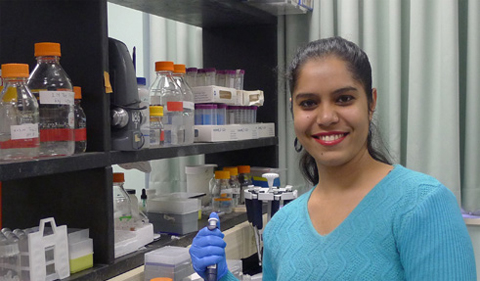
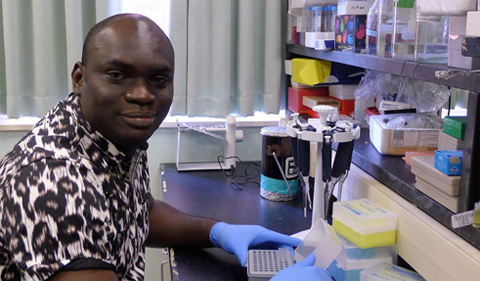
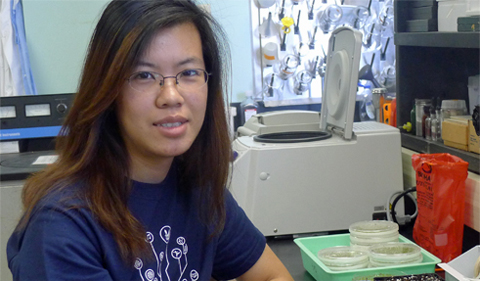

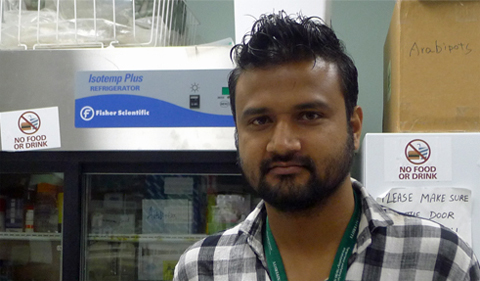
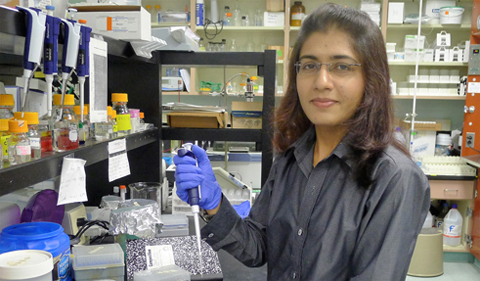

















Comments